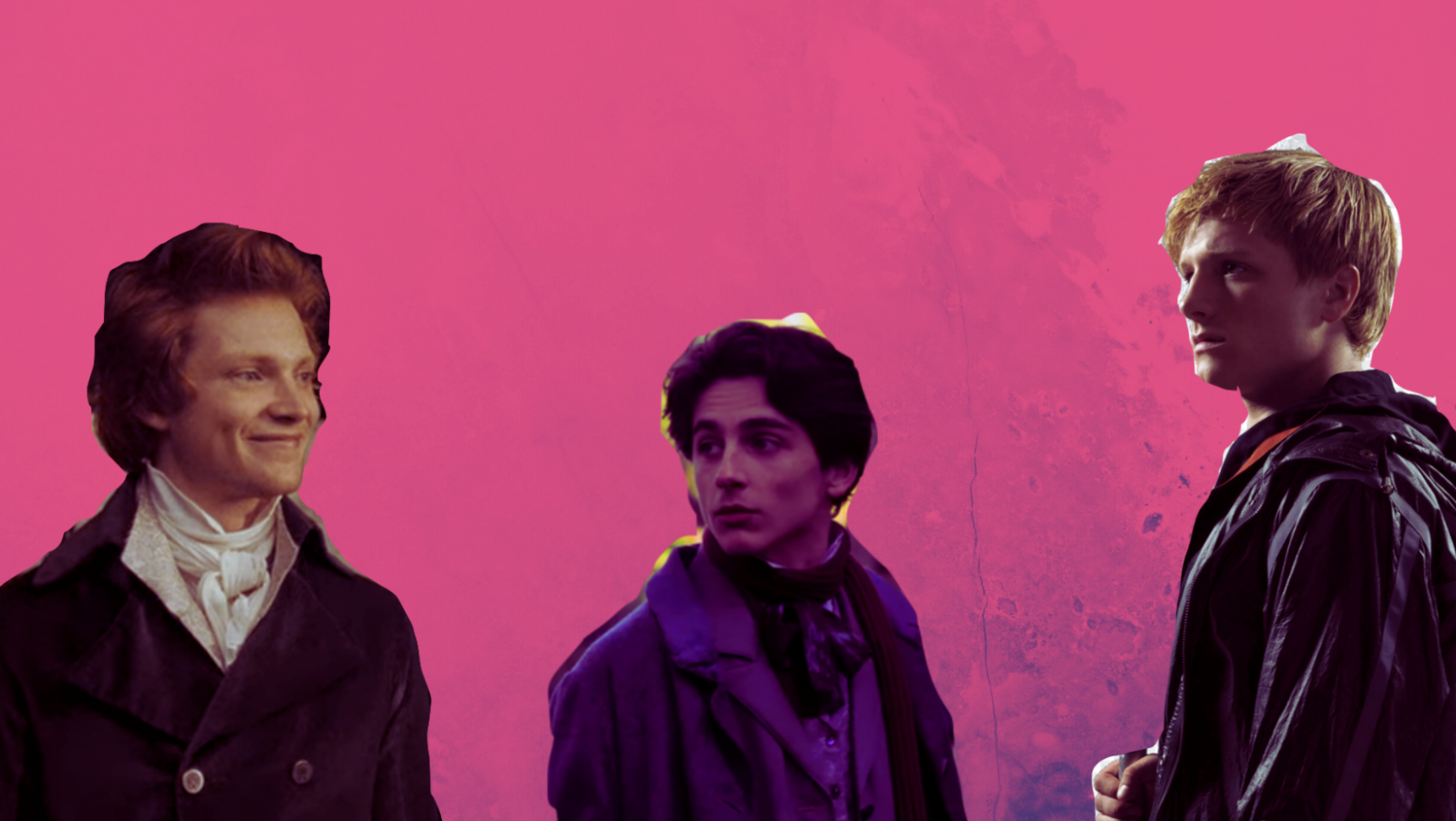Out of the way, bad boys—it’s time for the soft boy to shine!
A Brief History of the Soft Boy
For literally centuries, we have worshipped the tall, dark, brooding men as our romantic heroes. Look at Mr. Darcy or Heathcliff from Wuthering Heights as examples. They spend most of the book moping around, staring dramatically into the distance and waiting for the heroine to love them.
In contrast, Mr. Bingley, who inhabits the same novel as Mr. Darcy, is a complete cinnamon roll. He basically worships Jane Bennett, following her around like a sweet little puppy, and it’s adorable. Laurie from Little Women is similar. He has a mischievous side to him, sure, but he also falls head over heels for Jo, keeping her ring and pining for her all over Europe.
Enter YA
Fast forward to the start of YA. The brooding, sometimes possessive, bad boy is still all the rage. In the early 2000s, the most popular YA series was Twilight, featuring Edward Cullen, brooding, sexy, and also a little bit of a stalker. His popularity spawned a generation of bad boys. And let’s be honest… bad boys are fun. They do the bold things we wish we could do. They charm the pants off of us (sometimes literally). And let’s be honest: we all wish a hot guy would be obsessed with us. All that said, these bad boys would not make good boyfriends in real life.
In the later half of the decade, the dystopian genre brought some more rebellious bad boys, but also one soft boy who would revolutionize the archetype. Peeta Mellark burst onto the scene and won all of our hearts, changing the tide of YA boyfriends for the better.
Qualities of a Soft Boy
Peeta is the exact opposite of the pushy, possessive type. Despite being in love with Katniss for years, he never pressures her to feel the same way or violates her boundaries off-camera. He makes an effort to get to know her, asking important questions like what her favorite color is. And he always, always, puts her needs and her very survival above his own. He is always kind and encouraging to everyone around him, pushing Katniss to hope when everything seems hopeless. Katniss describes him as a “dandelion in spring,” a perfect description.
Since then, many current YA authors have followed Collins’ lead in creating softer, more healthy male love interests. Popular YA romance writer Emily Wibberley has spoken about her commitment to countering “male stereotypes of overconfidence and possessiveness,” and in her novels, she’s created men who are kind and respectful and yet still exude healthy confidence.
The soft boy exists to show us how women–and all people in general–should be treated, with respect and dignity. The soft boy also shows us that real men have interests—they can get super excited and nerd out—and they are also in touch with their emotions.
Advertisement
Soft Boys Today
Recently, the bad boy trope has been making a comeback, as the popularity of the Darkling and Loki prove. But the soft boy continues to hold his own in popularity. He has become a staple in the YA novels of today. Some recent great examples include Laurie (Timothee Chalamet) in Greta Gerwig’s Little Women and John Ambrose (Jordan Fisher) in P.S. I Still Love You. This trope is thriving, and I hope it will for years to come.
Recent Book Recommendations
- Always Never Yours by Emily Wibberley and Austin Siegemund-Broka
- Sing Me Forgotten by Jessica S. Olson
- The Nature of Witches by Rachel Griffin
- The Downstairs Girl by Stacey Lee
- Bone Gap by Laura Ruby
- Wicked Fox by Kat Cho
This feature is part of a series called Trope Tuesday here on the Books section of The Young Folks. In this series, we choose a trope that we love and explore its history, what is special about it, and provide recommendations!
Advertisement
